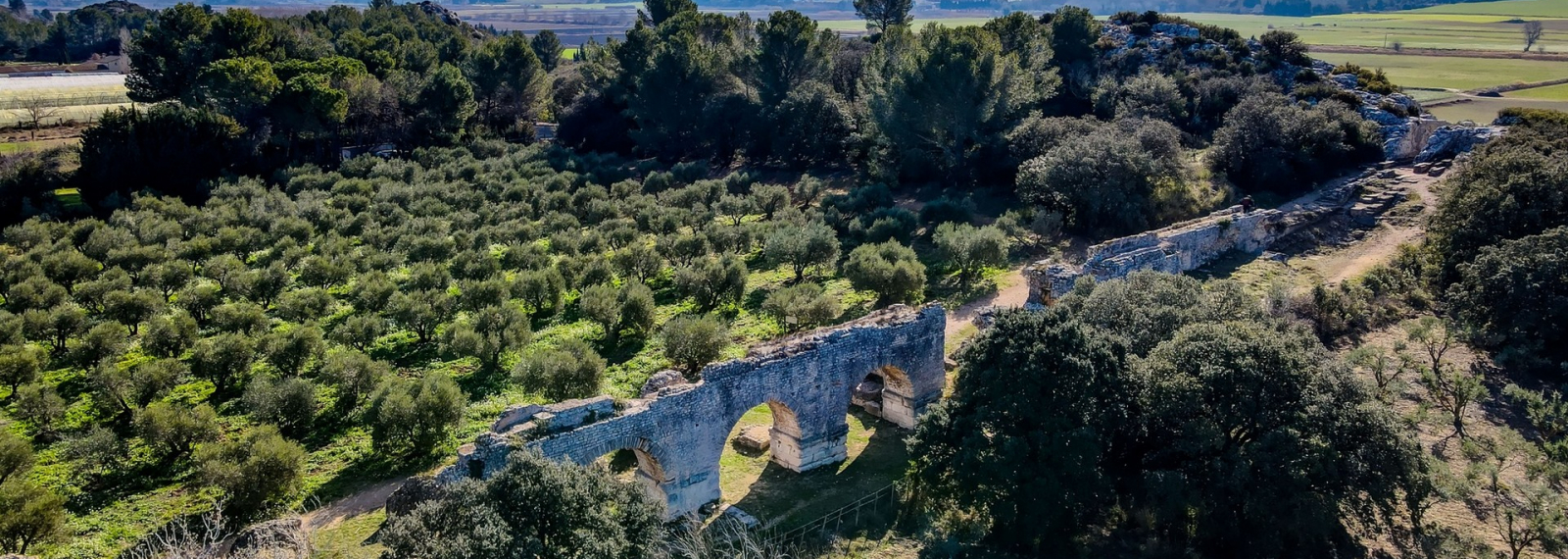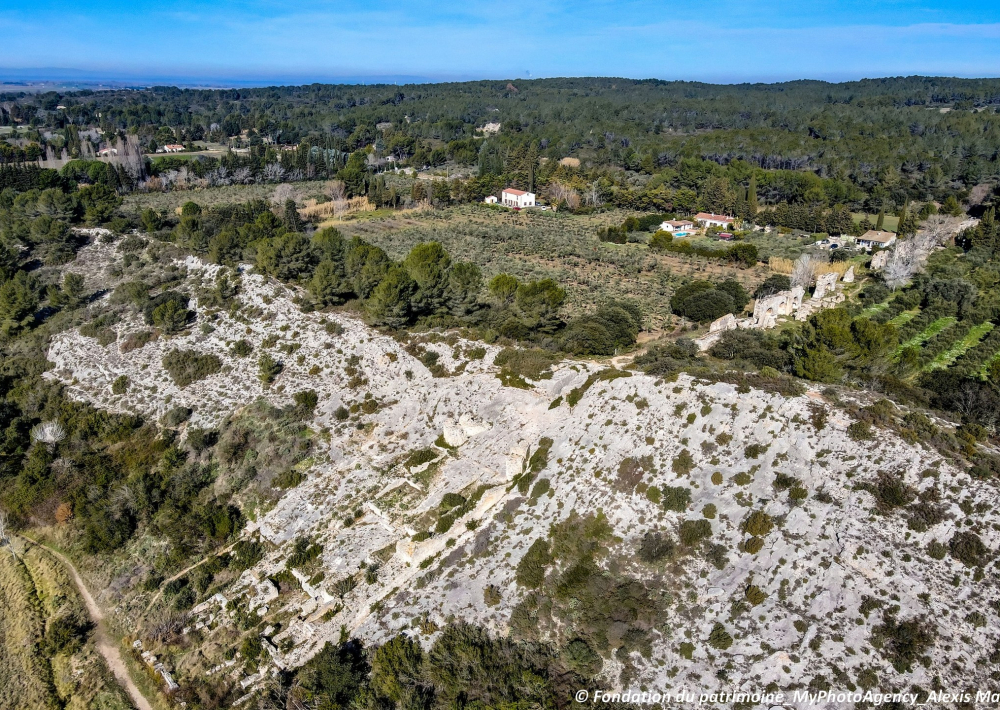

The remains of the largest known concentration of mechanical power in the ancient world, the Barbegal mill (2nd century) would have produced flour for the city of Arelate (Arles).

The remains of this imposing testimony to ancient engineering were identified and excavated by Fernand Benoît in the immediate post-war period. Until then, they had been interpreted as either a retention pond, part of the hydraulic network taking water from the Alpilles to Arles, or as a fulling mill.
Two sets of eight flour mills were placed on either side of a covered central staircase along which the water from a diversion of the Caperon aqueduct ran in two parallel channels. A second parallel aqueduct crossed the depression in the Les Arcs Valley over a bridge and then in a wide groove in the rocks (known by the name of 'peiro traoucado' (pierced stone), to take the water to the millstreams.
This industrial complex supplied flour to the town of Arles. Flat-bottomed boats travelling on the water of the Les Baux marshlands brought bags of grains and returned to Arles carrying flour. The mills did not work continuously; they could be stopped on demand thanks to a system of valves. The water was then redirected to Arles.
A mock-up showing the original layout of the complex is on display at the Departmental Museum of Ancient Arles.